Table of Contents
TYPHOID FEVER
Introduction
Typhoid fever is a bacterial disease transmitted by food or water coacervated with the bacteria Salmonella typhi. This disease is a water bourn and air bourn disease etc. water bourn disease way is like -diarrhea cholera typhoid. it can cause abdominal pain headache and loss of appetite.
“Typhoid fever “also called enteric fever. typhoid fever is an infection of the intestinal tract and occasionally the bloodstream. the germ that causes typhoid is a unique human strain of salmonella called Salmonella typhi. typhoid fever is mainly transmitted by ingestion.
The illness is characterized by prolonging typical continuous fever 3-4 weeks bradycardia and involvement of spleen and lymph nodes.
DEFINITION
“Typhoid fever is an acute infectious disease caused by Salmonella typhi”.
“A typhoid fever is an enteric fever is an infection causes the bacterial Salmonella typhi“.
“Typhoid is a usually curable but sources bacterial in are essentially resistance to antibiotic”.

Typhoid is an infectious disease of the small intestine which is characterized by prolongest fever toxic symptoms or constitutional disturbance. Typhoid fever is a bacterial disease transmitted by food or water with the bacteria Salmonella typhi”.
TYPES OF TYPHOID FEVER
Typhoid fever are two types
- Typhoid fever-Its caused by the Gram-Negative organism Salmonella enterica subspecies enterica serovar Typhi (Salmonella typhi).
- Paratyphoid fever-Paratyphoid fever is caused by three serovars of Salmonella enterica subspecies enterica its is a three types
- Paratyphi-A
- Schottmuelleri-B (also called S.paratyphi B)
- Hirschfeldii-C (Also called S.paratyphi C)
EPIDEMIOLOGY
AGENT
- The causative organism of typhoid fever is s.typhi.
- The agent is being carried by cases and carriers in their stool or urine.
- Sources of infection are primary sources are urine and feces of case and carrier and secondary sources are contaminated water, food, finger flies, etc.
Host factors
- Typhoid fever is having the highest incidence in the 5-19yr of age group but it can occur at any age.
- It occurs more in males and females but in female carriers rate is more.
Environmental factors
- Typhoid fever occurs throughout the year but the peak incidence is during July-September rainy seasons.
- Contaminated water food.
- Open defecation and urination.
- Poor personal and environmental hygiene.
Mode of transmission
- Direct-By soiled hand contaminated with feces or urine of a case or carrier.
- Indirect-By contaminated water food milk.
- Incubation period-The incubation period is usually 10-14 days but it can range from 3days to 3 weeks.
CAUSES OF TYPHOID (ETIOLOGY)
The following are several ways to causes typhoid fever
(1) Salmonella Typhi Bacilli-: Typhoid fever is caused by the bacterium salmonella. These bacteria adhere to ileal tissue in the GI tract survive in macrophages cell are the carrier to mesenteric lymph nodes.
(2) By Carrier-: This means the salmonella typhi bacteria continuously live in the carrier body and can be spread as normal in feces or urine but the carrier does have any noticeable symptoms of the condition.
(3) Environment factor-The main factor in causing a typhoid fever is contaminated food, water, and milk. The following several Environment factor ways we can get typhoid fever
- Drinking contaminated water, drinks, and milk.
- Eating fresh fruits that have been washed with contaminated water.
- Direct Contact with someone who is infected with typhoid.
(4). Unhealthy habits-This is caused due to lack of personal hygiene .the following several unhealthy habits can cause typhoid fever
- From eating food without washing your hands.
- Cooking food without washing vegetables. It’s unhealthy habits.
- From touching your mouth after going to the bathroom.
(5).Poor sanitation
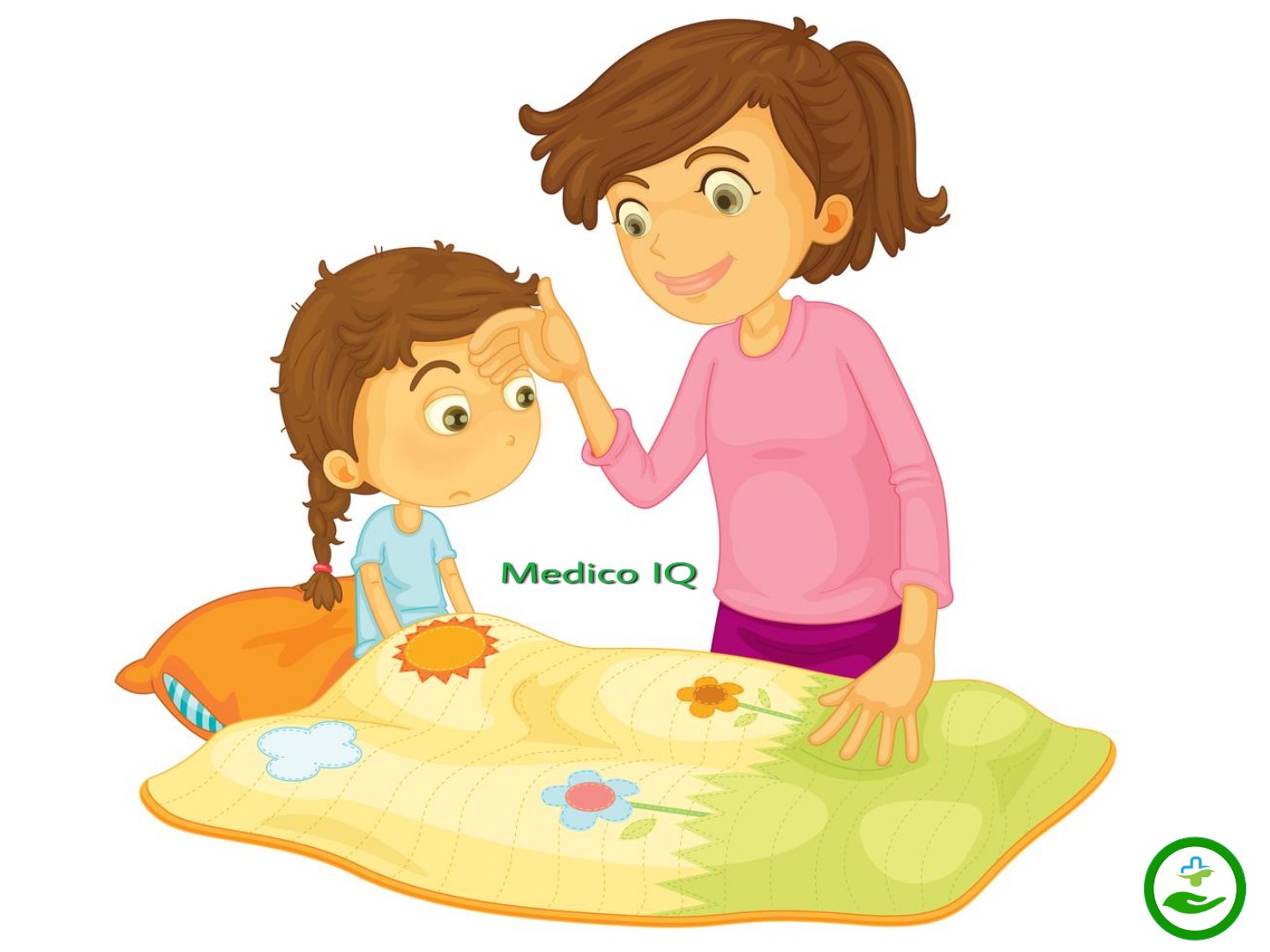
PATHOPHYSIOLOGY
Ingestion of water or food contaminated by Salmonella typhi
⇓
S. Typhi is able to survive in the gastric acid of the stomach
⇓
In the ileum, s.typhi penetrate mucus and or phagocytes in the payer and patella
⇓
S. Typhi reach mesenteric lymph nodes and multiply
⇓
S. Typhi is carried through the lymphatic system and bloodstream
⇓
S.Tphi colonize reticuloendothelial tissue (liver, spleen)
⇓
S. Typhi multiply in the gallbladder
⇓
S. Typhi is discharged into the intestine
⇓
It involves the payer’s patella of the small intestine.
SYMPTOMS OF TYPHOID (CLINICAL MANIFESTATION)
The sign and symptoms generally visualize 6-30 days after to expose of Salmonella Typhi bacteria.
The child usually presents with a rapid rise of temperature, extreme malaise, loss of appetite, constipation, abdominal pain, distension.
- Fever- Fever Started at a low level and they increase daily and their fever reaches 104 fr.
- Rash-Typhoid rash as a muscular red rose spot may appear on about the 6th day of illness. the rash may be visible on the trunk.
- Bradycardia-Bradycardia is a pulse rate is less than 60 that shows the symptoms of typhoid fever.
- Diarrhea-Diarrhea is usually found than constipation it is the fluid and electrolyte imbalance.
- Abdominal Pain And Distention -The abdomen feels roughly spleen is palpable one or two cm. below coastal margins and the liver may also be palpable.
- Headache-Headache is the most common symptom of typhoid fever, it can be sing stress and emotional distress.
- Weakness
- Loss of appetite
DIAGNOSIS EVALUATION
- History Taking-Ask the patient’s previous history related to typhoid fever. like what you ate? what you drank? and what is the condition of your environment? how to do you manage your hygiene? etc.
- Physical Examination
- Complete blood count (CBC)-This is the best method to diagnose typhoid fever. If suffering from the disease complete blood count will show an increase of Bacteria in white blood cell (WBC).
- ELISA-A recent diagnostic test ELISA (Enzyme-linked immunosorbent assay) urine test is done to look out for the bacteria that causes the disease.
- Widal test The Widal test is one of the best methods to diagnose typhoid fever. Widal test is an agglutination test that detects the presence of serum agglutinins in patient serum with typhoid and paratyphoid fever.
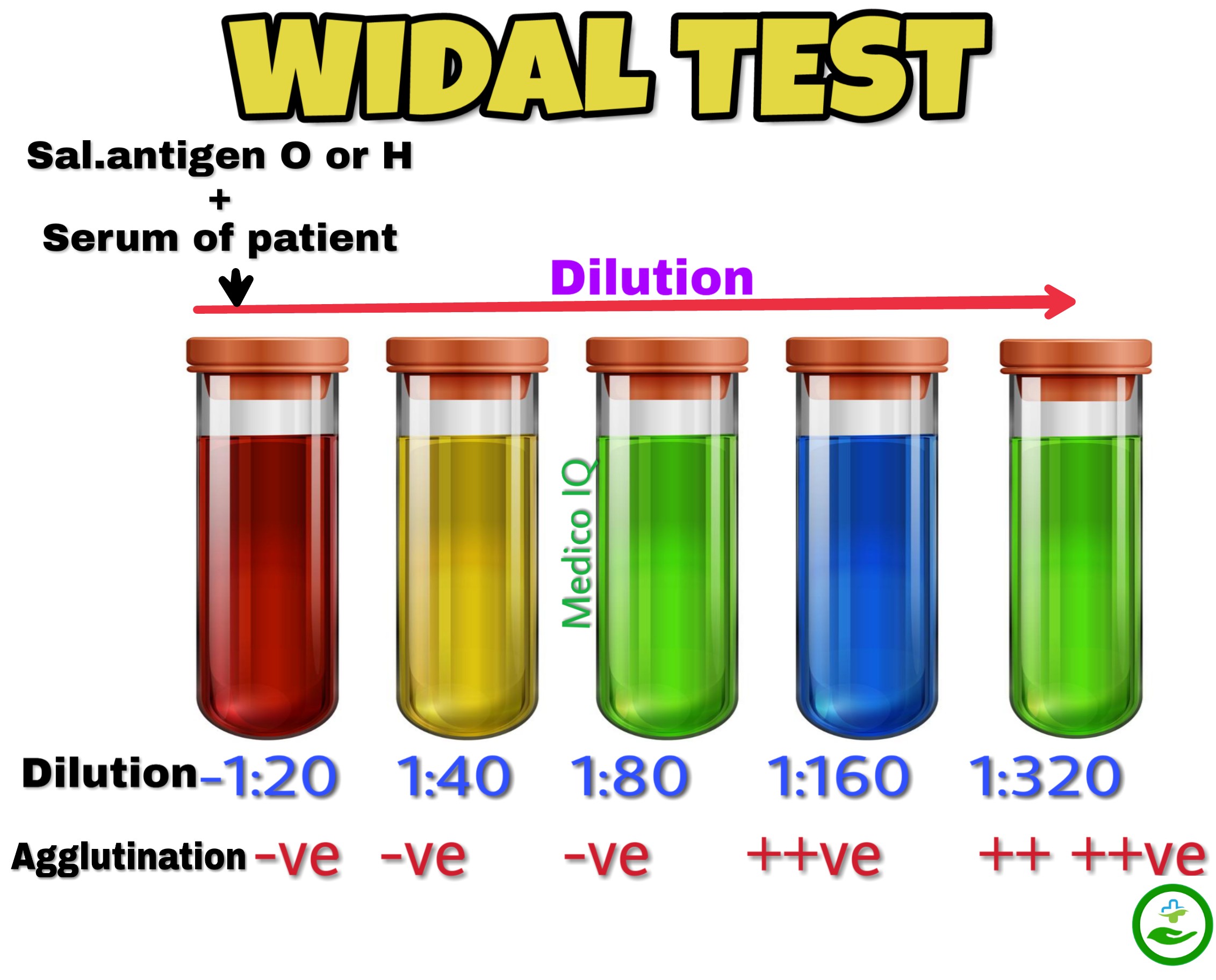
- Platelet Count-Platelet count in the case of the person affected by the disease is usually low.
- Stool Culture-It is done to determine the personality of the bacterium in the feces.
- Bone marrow biopsy-A bone marrow biopsy gives a more accurate result as compared to other tests. but it’s far more complex to carry out. a bone marrow biopsy includes a needle inserted right into a bone normally the pelvic breastbone to obtain a tissue sample that’s tested underneath a microscope for proof the typhoid infection
NURSING MANAGEMENT
Assessment
Identification of the disease by culture blood and stool examination.
- Improve the environment sanitation protection and purification of drinking water.
- Proper control of carriers practically as to sanitation disposal.
Nursing Diagnosis
- Acute pain related to typhoid fever is manifested by poor facial expression.
- Anxiety-related to typhoid fever as evidence by verbalization.
- Fluid and electrolyte imbalance related to typhoid fever is manifested by loss of appetite.
- Hyperthermia related to typhoid fever as evidence by warm body temperature.
- Knowledge deficiency related to typhoid fever is manifested by questioning and answering.
TREATMENT AND MEDICATION
The Analgesic-Antipyretic and Antibiotic Drug is used for the treatment of typhoid.
Antipyretic-This drug decreases the Temperature of the body. Ex- Paracetamol
Antibiotic- Antibiotic drug kills the typhoid fever bacteria. Ex-Ofloxacin, Ciprofloxacin, Ceftriaxone, Chloramphenicol, Co-trimoxazole.
- Ofloxacin-Its inhibit the replication of the DNA of bacteria.
- Ciprofloxacin-Its inhibit the replication of the DNA of bacteria.
- Ceftriaxone- This drug kills the cell wall of the bacteria.
- Cefixime-Inhibit the bacteria cell wall synthesis.
Read-Which food riched more vitamin and which food is beneficial for a well of typhoid fever.
TYPHOID VACCINES
Typhoid vaccines are available. there are two vaccines to prevent typhoid one is inactivated given as a shot. and second is live weekend vaccines which are taken orally.
- Inactivated typhoid vaccine (shot)-One dose provides protection, One dose is given at least 2 weeks before exposure.
- Live typhoid vaccine (oral)-It’s given orally in four capsules one capsule every other day for a week. the last dose should be given at least 1 week before exposure.
COMPLICATIONS
The complication of typhoid is generally occurring in people who have been late treated typhoid. Commonly 2 major complications have seen 1st intestinal bleeding and intestinal perforation.
- Intestinal Bleeding-Intestinal Bleeding as a potential complication. the following are symptoms of intestinal bleeding. play skin, blood in the stool, shortness of breath.
- Intestinal Perforation-A perforation intestine occurs in the small intestine or large bowel develops a hole causing intestine content to leak into abdominal cavities such as severe abdominal pain, nausea, vomiting, and bloodstream infection.
- Myocarditis-Inflammation of the heart Muscles.
- Pneumonia-Along an infection that develops by breathing in foreign material.
- Meningitis-Infection and inflammation of the membrane and fluid surrounding the brain and spinal cord.
HEALTH CARE
A vaccine in a recommendation for travel outside of there is typhoid fever.
- Rest and sleep-: proper rest and sleep important for funding the mind and body.
- Personal Hygiene-To maintains the proper personal hygiene it is important for the prevention of infection and maintaining of health.
- Diet- Proper intake of diet food like fresh fruits and vegetables for maintaining health.
- Medication-This is one of the most important to improve health Take medicine proper way and from time to time.
PREVENTION
- Do not eat food or drink beverages from street vendors.
- Drink only boil water.
- Prepare dinner all meals very well and eat it even as it’s hot.
- Preserve flies away from food.
- Peel off fruits and vegetable skins before eating.
- Avoid junk food intake.
- Maintain personal hygiene.
- Use shield boltel mineral water during traveling.
- Avoid sharing spoon forks cloth towels of food with an infected person.
CONCLUSION
Typhoid is an infectious disease which is caused by Salmonella typhi. This disease is air bourn and waterborne disease. which is caused by contaminated food, milk, water.
And they spread direct contact with someone who is infected with typhoid fever. their symptoms are fever, Headache, Abdominal Pain, Rases, Diarrhoea, etc.
It is a diagnosis by ELISA test CBC test and generally they clearly diagnosis by Widal test.
sometimes they create a complication like Intestinal bleeding, inflammation of heart and muscles and intestinal perforation. Typhoid is treated by antipyretic drugs and analgesic antibiotics drugs.

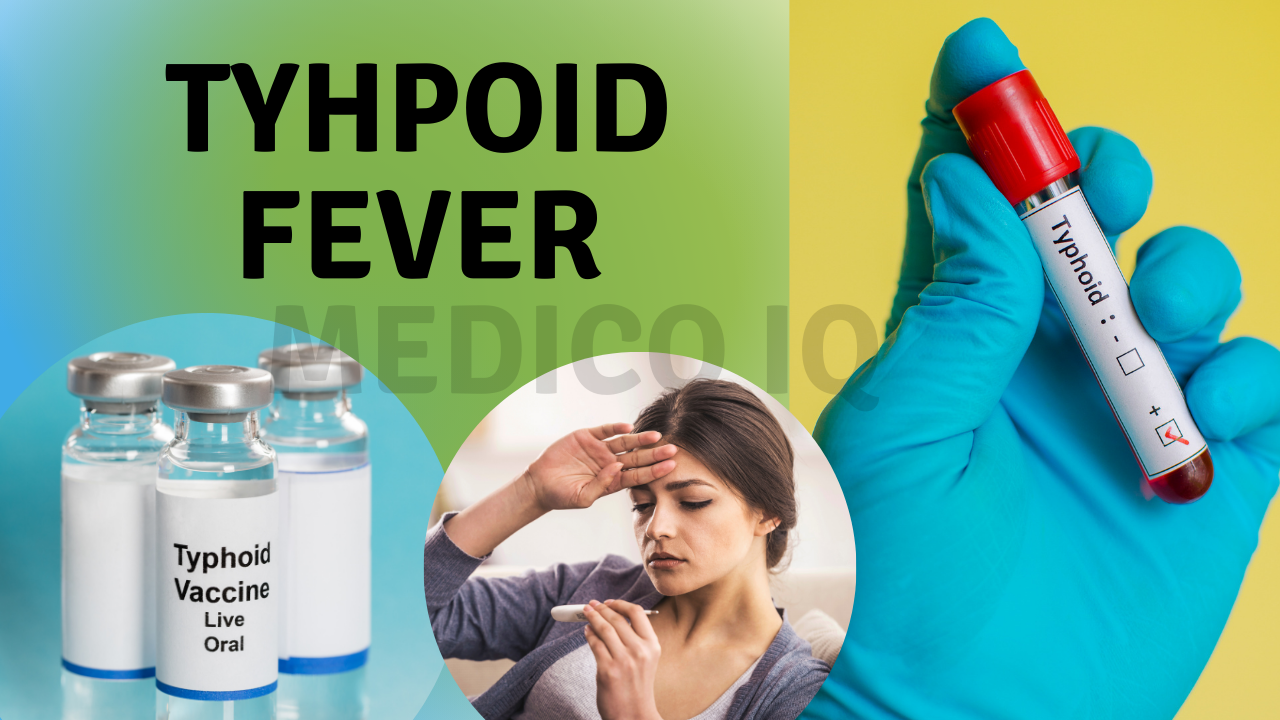
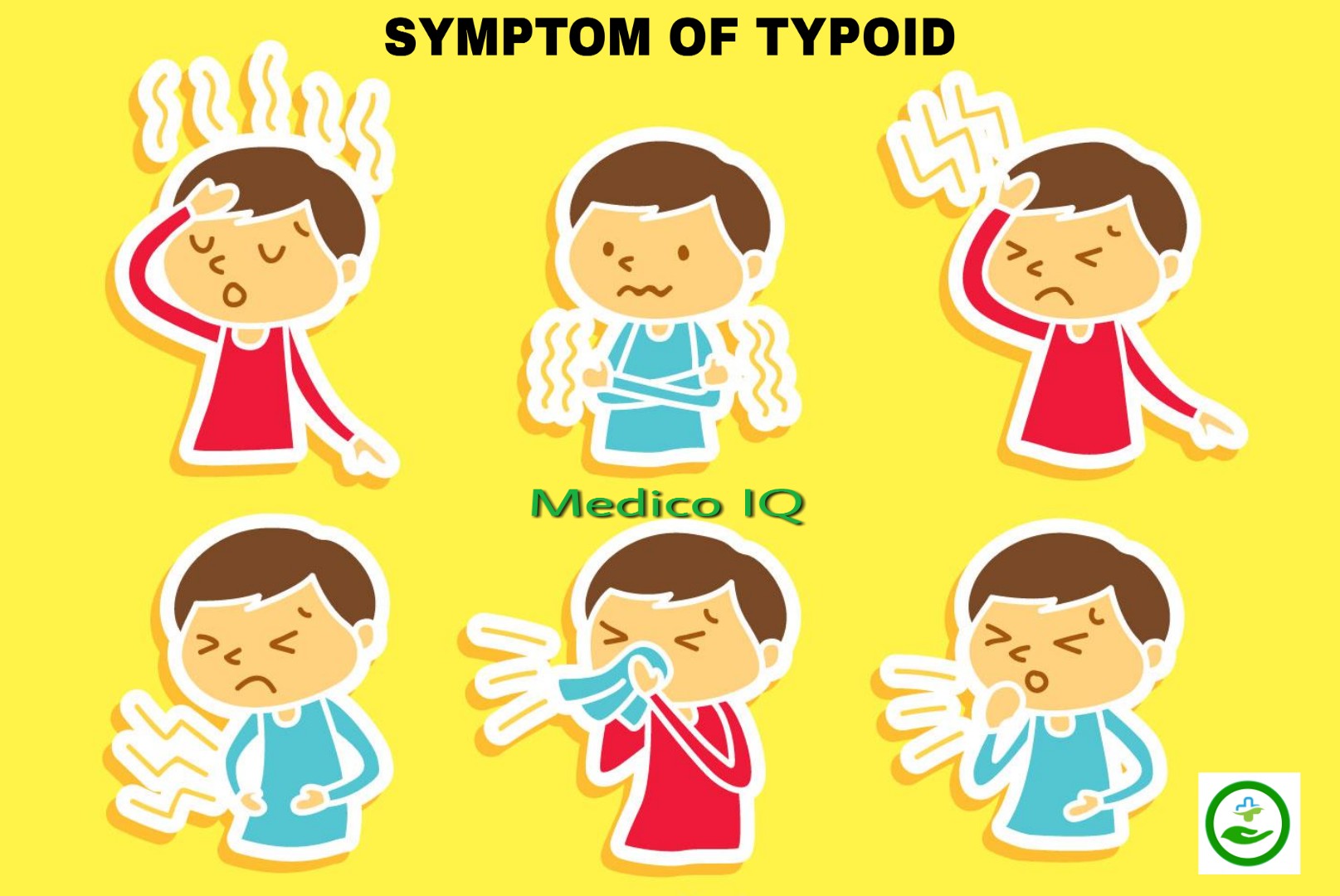



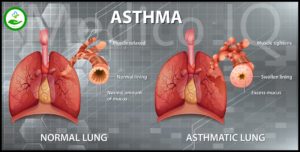


Great news once again!
I love reading your site.
Amazin!
This is a great blog.
Thanks
Great & thanks dear It’s our pleasure
Thank you
Thank you, dear
Great news once again!
I love reading your site.
Hey there! Would you mind if I share your blog with my myspace
group? There’s a lot of people that I think
would really appreciate your content. Please let me know.
Cheers